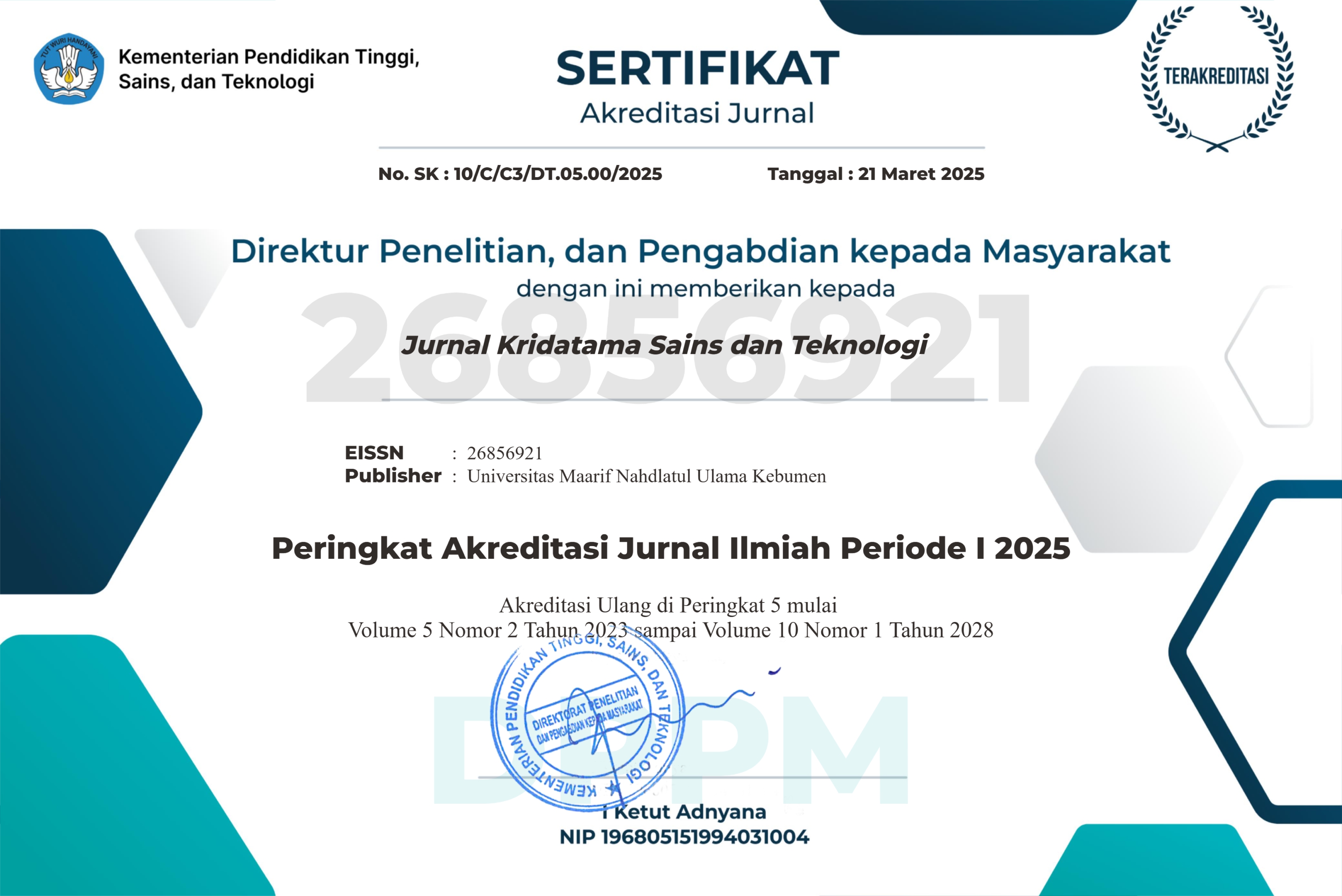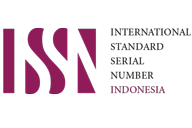Sistem Manajemen Kelas Menggunakan K-Means Clustering untuk Pengelompokan Kelas Unggulan pada Sekolah Dasar Negeri Neglasari 3
DOI:
https://doi.org/10.53863/kst.v7i02.1841Keywords:
System, Management, K-Means clustering, Student Grouping, Elite ClassAbstract
This study aims to develop and analyze a classroom management system using K-Means Clustering at SD Negeri Neglasari 3. The system is designed to group outstanding classes objectively, efficiently, and transparently based on students' academic achievements. The system is designed to streamline the data processing of students in the grouping of elite classes, which currently still relies on manual processes. The system development method used is the waterfall method, consisting of the following stages: Requirement Analysis, Design, Implementation, Testing, and Maintenance. The system is built using the Hypertext Preprocessor (PHP) programming language and the MySQL database. To test the developed system, several methods were used, including black-box testing, User Acceptance Test (UAT), time comparison tests (pre-test and post-test), and the distribution of satisfaction questionnaires to 10 teachers as respondents. The research results showed that black-box testing and User Acceptance Test validation were 100% successful. Additionally, the developed system demonstrated a significant improvement in task completion time efficiency for class grouping, increasing by 80.63% compared to manual methods. The questionnaire responses yielded a score of 4.49 out of 5. Thus, the research findings confirm that the developed system is a valid solution for objectively and efficiently grouping elite classes
References
Azzahra, L., & Amru Yasir. (2024). Metode K-Means Clustering Dalam Pengelompokan Penjualan Produk Frozen Food. Jurnal Ilmu Komputer Dan Sistem Informasi, 3(1), 1–10. https://doi.org/10.70340/jirsi.v3i1.88
Dacwanda, D. O., & Nataliani, Y. (2021). Implementasi k-Means Clustering untuk Analisis Nilai Akademik Siswa Berdasarkan Nilai Pengetahuan dan Keterampilan. Aiti, 18(2), 125–138. https://doi.org/10.24246/aiti.v18i2.125-138
Darmansah, Chairuddin, I., & Asa, R. S. (2021). Analisis Penyebaran Penularan Virus Covid-19 di Provinsi Jawa Barat Menggunakan Algoritma K-Means Clustering. JATISI (Jurnal Teknik Informatika Dan Sistem Informasi), 8(3), 1188–1199. https://doi.org/10.35957/jatisi.v8i3.1034
Darmansah, D. D., & Wardani, N. W. (2021). Analisis Pesebaran Penularan Virus Corona di Provinsi Jawa Tengah Menggunakan Metode K-Means Clustering. JATISI (Jurnal Teknik Informatika Dan Sistem Informasi), 8(1), 105–117. https://doi.org/10.35957/jatisi.v8i1.590
Hutagalung, J., Syahputra, Y. H., & Tanjung, Z. P. (2022). Pemetaan Siswa Kelas Unggulan Menggunakan Algoritma K-Means Clustering. JATISI (Jurnal Teknik Informatika Dan Sistem Informasi), 9(1), 606–620. https://doi.org/10.35957/jatisi.v9i1.1516
Kayati, S., Junadhi, Yenni, H., & Asnal, H. (2022). Penerapan Metode Multi Attribute Utility Theory (MAUT) Pada Sistem Pendukung Keputusan dalam Menentukan Kelas Unggulan di SMKN 1 Mandau. Teknologi, 12(2), 39–46. https://doi.org/10.26594/teknologi.v12i2.3282
Muningsih, E., Nur, H. M., Dwi Imaniawan, F. F., Saifudin, Handayani, V. R., & Endiarto, F. (2020). Comparative Analysis on Dimension Reduction Algorithm of Principal Component Analysis and Singular Value Decomposition for Clustering. Journal of Physics: Conference Series, 1641(1). https://doi.org/10.1088/1742-6596/1641/1/012101
Murphy, R., & Weinhardt, F. (2020). Top of the Class: The Importance of Ordinal Rank. Review of Economic Studies, 87(6), 2777–2826. https://doi.org/10.1093/restud/rdaa020
Novi, & Mubarok, A. (2021). Penerapan Algoritma K-Means Untuk Menentukan Kelas. INFOMATEK, 23(2), 97–106. https://doi.org/10.23969/infomatek.v23i2.4351
Noviyanto. (2020). Penerapan Data Mining Dalam Mengelompokkan. Paradigma – Jurnal Informatika Dan Komputer, 8(3). https://sulsel.bps.go.id/searchengine/result.html.
Nurdiansyah, D., & Rafdhi, F. (2022). Analisa Dan Perancangan Aplikasi E-Learning Stmik Muhammadiyah Jakarta. Jurnal Teknik Informatika Kaputama (JTIK), 6(2).
Satria, C., & Anggrawan, A. (2021). Aplikasi K-Means berbasis Web untuk Klasifikasi Kelas Unggulan. MATRIK : Jurnal Manajemen, Teknik Informatika Dan Rekayasa Komputer, 21(1), 111–124. https://doi.org/10.30812/matrik.v21i1.1473
Sinaga, K. P., & Yang, M. S. (2020). Unsupervised K-means clustering algorithm. IEEE Access, 8, 80716–80727. https://doi.org/10.1109/ACCESS.2020.2988796
Sulistiyawati, A., & Supriyanto, E. (2021). Implementasi Algoritma K-means Clustring dalam Penetuan Siswa Kelas Unggulan. Jurnal Tekno Kompak, 15(2), 25. https://doi.org/10.33365/jtk.v15i2.1162
Wulandari, F. T., Jayanti, A. D., & Setiawati, D. (2023). Sistem Pendukung Keputusan Pemilihan Siswa Kelas Unggulan Berbasis Web Dengan Metode Topsis. Prosiding Sains Nasional Dan Teknologi, 13(1), 219–232. https://doi.org/10.36499/psnst.v13i1.9543
Yudistira, A., & Andika, R. (2023). Pengelompokan Data Nilai Siswa Menggunakan Metode K-Means Clustering. Journal of Artificial Intelligence and Technology Information (JAITI), 1(1), 20–28. https://doi.org/10.58602/jaiti.v1i1.22
Downloads
Published
How to Cite
Issue
Section
License
Copyright (c) 2025 Fitri Anggraini, Imam Suprapta, Warno Warno, Hafid Fahrezi

This work is licensed under a Creative Commons Attribution-ShareAlike 4.0 International License.
Authors retain copyright and grant the journal right of first publication with the work simultaneously licensed under a Creative Commons Attribution-ShareAlike 4.0 International License that allows others to share the work with an acknowledgment of the work’s authorship and initial publication in this journal

















